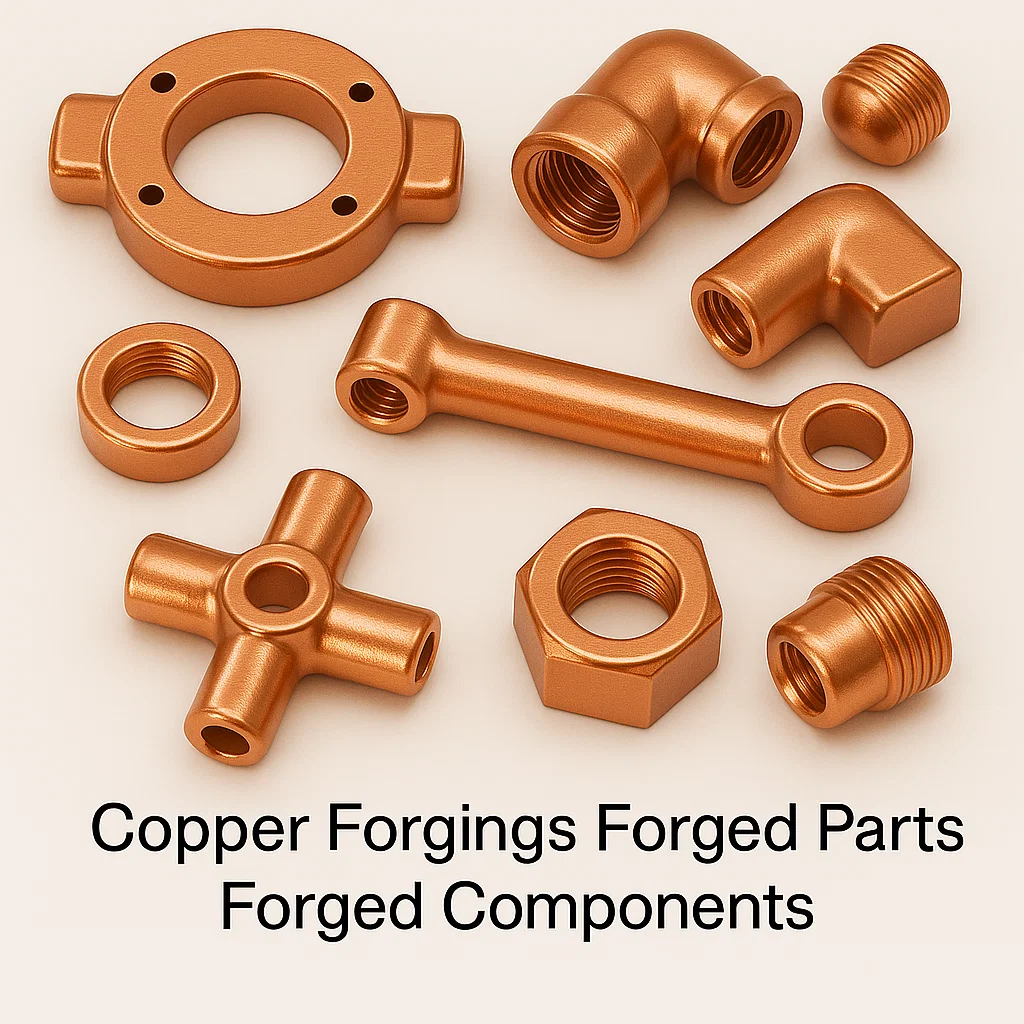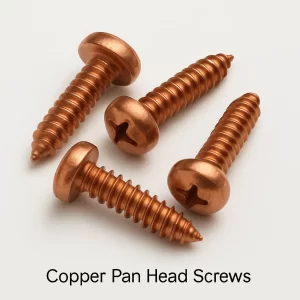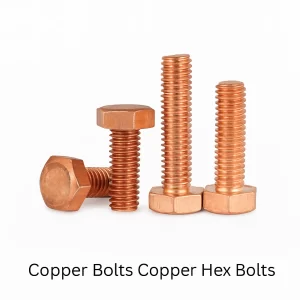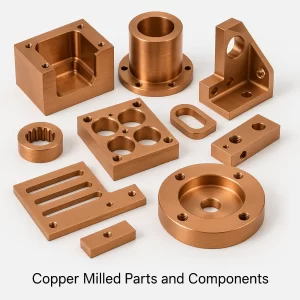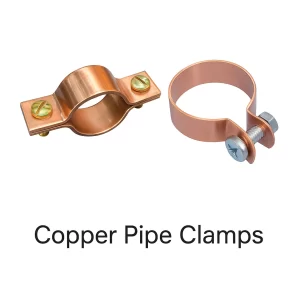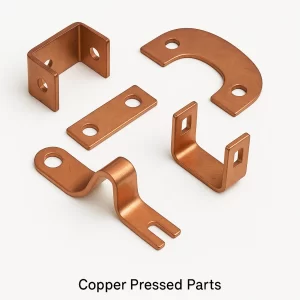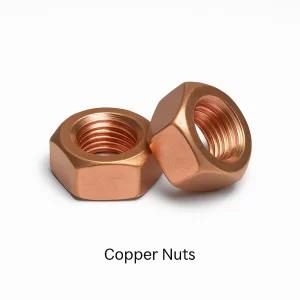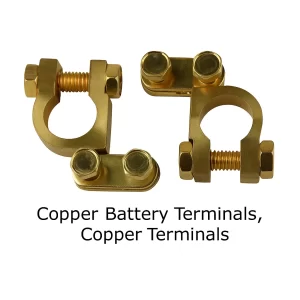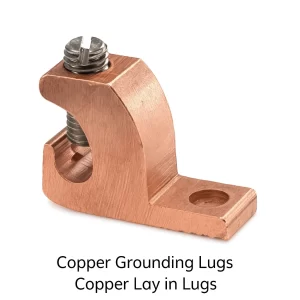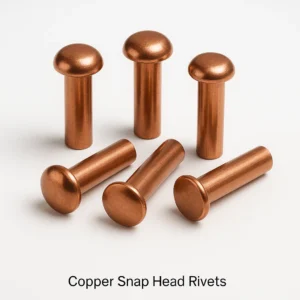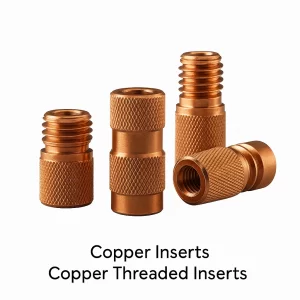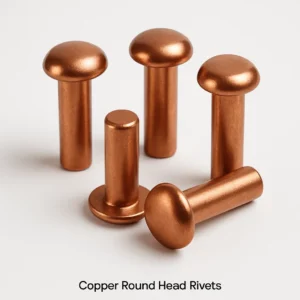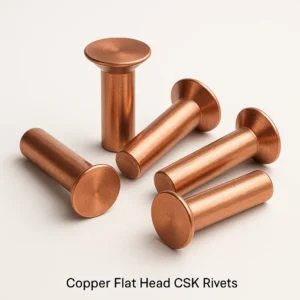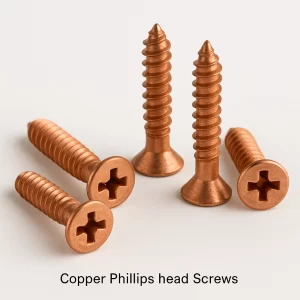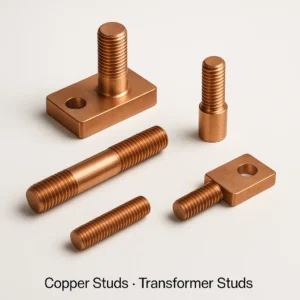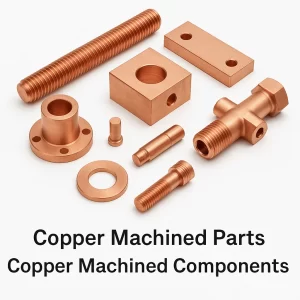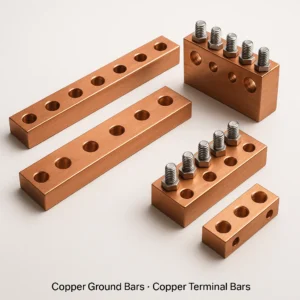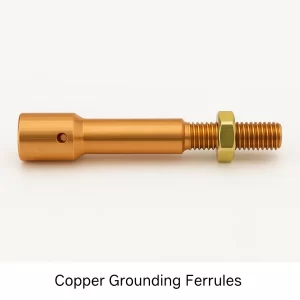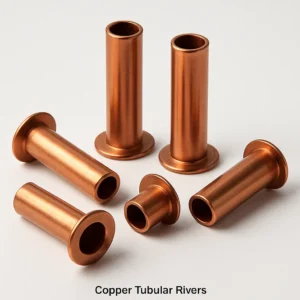Comprehensive Overview of Copper Forgings and Forged Copper Components
We are one of the leading manufacturers and exporters of Copper Forgings, Forged Copper Parts, and Copper Forged Components from India. We have been supplying precision copper forged products, hot forged copper components, cold forged copper parts, and custom copper forgings to the world market for many decades. Our state-of-the-art manufacturing facility specializes in producing high-quality copper forgings using advanced hot forging technology, precision cold forging processes, upset forging operations, closed-die forging capabilities, open-die forging methods, and comprehensive machining and finishing services. With over three decades of global experience in copper forging manufacturing, we serve diverse industries including electrical copper forged bus bars and connectors, marine copper forged hardware and fittings, industrial copper forged valve components, automotive copper forged electrical terminals, railway copper forged contact parts, telecommunications copper forged grounding components, oil and gas copper forged wellhead parts, power generation copper forged switch components, and chemical processing copper forged equipment parts. Our expertise encompasses working with various copper grades including pure Copper C11000 forgings offering excellent electrical conductivity and formability, Copper C10200 oxygen-free forgings for high-performance electrical applications, Silicon Bronze C65500 forgings for marine environments, Aluminum Bronze forgings for high-strength applications, Phosphor Bronze forgings for wear resistance, Brass forgings for decorative applications, and Beryllium Copper forgings for maximum strength requirements. We manufacture copper forgings ranging from small components weighing a few grams to large forged parts weighing several kilograms, all maintaining superior grain structure, mechanical properties, dimensional accuracy, and surface finish.
Our advanced manufacturing capabilities in producing precision copper forged components extend across multiple forging processes including hot forging using hydraulic presses up to 500 tons capacity for large copper components with controlled grain flow and optimal mechanical properties, cold forging for smaller precision copper parts with excellent surface finish and tight tolerances, upset forging for creating enlarged heads or flanges on copper shafts and rods, closed-die forging producing near-net-shape copper components with intricate details requiring minimal machining, open-die forging for custom copper shapes and prototypes, ring rolling for seamless copper rings and flanges, and progressive forging for complex multi-step copper components. Our engineering team possesses deep technical knowledge of copper material behavior during forging, optimal forging temperatures for various copper alloys, die design for copper forgings, grain flow optimization, forging defect prevention, and post-forging treatments ensuring every copper forged component meets or exceeds customer specifications and industry standards. Our quality management system complies with ISO 9001:2015 standards, forging quality standards, ASTM copper material specifications, customer-specific forging requirements, and industry standards including electrical, marine, and automotive specifications. We maintain complete traceability of copper raw material certificates, detailed forging process documentation, mechanical test records, ultrasonic inspection reports for critical components, and material test reports for every batch of copper forgings produced. Our customers across North America, European Union countries, United Kingdom, Australia, Middle East regions, and Southeast Asian markets trust our copper forging expertise for their critical applications requiring superior mechanical properties and reliability.
Copper Forgings – Hot and Cold Forged Copper Components
Copper Forgings represent specialized metal components manufactured through controlled plastic deformation processes where copper or copper alloy material is shaped using compressive forces in heated or room temperature conditions, creating parts with superior mechanical properties, controlled grain structure, and excellent dimensional accuracy compared to cast or machined components. These copper forgings are produced through various forging methods including hot forging at temperatures between 700-900°C for pure copper and copper alloys enabling large deformation and complex shapes, cold forging at room temperature for smaller components requiring excellent surface finish and dimensional precision, warm forging at intermediate temperatures for specific copper alloys, upset forging creating enlarged sections through axial compression, and closed-die forging producing near-net-shape components with minimal material waste. Copper forgings find extensive applications in electrical industry including forged copper bus bars, electrical connectors, switch contacts, circuit breaker components, transformer terminals, grounding electrodes, and cable lugs where forged grain structure provides superior electrical conductivity and mechanical strength, marine applications including forged propeller shafts, rudder fittings, ship hardware, marine valve stems, and saltwater-resistant components, automotive electrical systems including forged battery terminals, alternator parts, starter components, and electrical distribution hardware, industrial valve components including forged valve bodies, stems, seats, and fittings for chemical processing and oil and gas applications, railway electrical systems including forged contact strips, pantograph components, and grounding hardware, telecommunications equipment including forged grounding components and equipment hardware, and oil and gas wellhead components requiring corrosion resistance and mechanical reliability.
Our copper forging manufacturing services include engineering consultation for forging design optimization, material selection guidance based on mechanical properties and environmental conditions, die design and fabrication for custom copper forged components, forging simulation using finite element analysis predicting material flow and defect prevention, prototype development with initial forging trials, production forging with consistent quality and dimensional accuracy, secondary machining operations including CNC turning, milling, drilling, and threading, heat treatment for copper alloys requiring solution treatment and aging, surface treatment including polishing, plating, or coating, and complete documentation with material certificates and mechanical test reports. We accommodate copper forging sizes ranging from small components weighing 50 grams to large forgings weighing 50 kilograms, with forging press capacities from 100 tons to 500 tons. Material specifications conform to ASTM B124 for copper bars and rods, ASTM B187 for copper wire and rod, ASTM B150 for aluminum bronze rods and bars, ASTM B103 for phosphor bronze plate sheet strip and rolled bar, and corresponding international standards including EN designations for European copper grades, JIS specifications for Japanese copper standards, and IS standards for Indian copper materials. Copper forgings typically provide tensile strength ranging from 220 MPa for pure copper to over 1000 MPa for heat-treated beryllium copper, with elongation properties superior to cast components. The lead time for copper forging production typically ranges from four to six weeks depending on component complexity, forging die requirements, quantity, secondary operations, and heat treatment specifications.
Forged Copper Parts – Precision Forged Components
Forged Copper Parts represent the broad category of copper components manufactured through forging processes providing superior mechanical properties compared to alternative manufacturing methods including casting, machining from bar stock, or fabrication. These precision forged copper parts are produced with controlled grain flow following component contour providing enhanced strength in critical stress directions, elimination of porosity and internal defects common in cast components, work-hardened surface from forging dies improving wear resistance, tight dimensional tolerances reducing secondary machining requirements, and consistent mechanical properties throughout production batches. Common forged copper part configurations include forged copper flanges for pipe connections and valve mounting, forged copper fittings including elbows, tees, and reducers for plumbing and industrial piping, forged copper terminals and connectors for electrical applications, forged copper valve stems and bodies for fluid control, forged copper marine hardware including cleats, chocks, and fittings, forged copper electrical bus bars with complex shapes and mounting provisions, forged copper switch contacts and breaker components, forged copper grounding electrodes and clamps, forged copper heat exchanger components, and custom forged copper parts per engineering drawings. The forging process provides advantages including improved mechanical properties with 20-30% higher strength compared to machined parts from same material, superior fatigue resistance critical for cyclically-loaded components, elimination of material waste compared to machining operations, faster production rates for high-volume components, and capability to produce complex shapes with undercuts and varying cross-sections.
The manufacturing process for precision forged copper parts begins with copper material selection and procurement in appropriate form including bar stock, billet, or slug depending on component geometry, material cutting to required weight and dimensions for forging, preheating in controlled atmosphere furnaces to forging temperature for hot forging operations ranging from 700-900°C depending on copper alloy, transfer to forging press and positioning in lower die, forging operation applying compressive force through upper die creating final component shape with multiple forging blows for complex parts, trimming excess material (flash) from parting line using trimming dies or machining, heat treatment if required for copper alloys including solution treatment at 800-950°C followed by water quenching and artificial aging at 300-500°C for precipitation hardening alloys, secondary machining operations including facing, drilling, threading, or precision turning to achieve final dimensions and features, surface finishing operations including deburring, polishing, or coating application, quality inspection including dimensional verification, mechanical testing, and non-destructive testing for critical components, and final packaging with protective measures. Our forged copper part capabilities include component dimensions from 10mm to 500mm in various axes, forging tolerances typically ±1mm for general dimensions with capability to achieve ±0.5mm for precision features, surface finish from forging dies typically 3.2-6.3 Ra with capability to achieve better finish through secondary operations, and weight range from 50 grams to 50 kilograms per component.
Copper Material Grades and Forging Specifications
Copper Material Specifications and Standards for Forgings
| Copper Grade | International Designation | Key Properties | Typical Forging Applications | Standards |
|---|---|---|---|---|
| Copper C11000 | CW004A (EN), C1100 (JIS), T2 (GB) | 99.9% pure copper, excellent conductivity, good forgeability | Electrical bus bars, terminals, grounding components | ASTM B124, BS EN 1652, DIN EN 13601, JIS H3250, IS 191 |
| Copper C10200 | CW008A (EN), C1020 (JIS), TU2 (GB) | Oxygen-free copper, highest conductivity, premium electrical | High-performance electrical forgings, critical connections | ASTM B170, BS EN 1652, DIN EN 13599, JIS H3250 |
| Silicon Bronze C65500 | CW115C (EN), CAC406 (JIS) | High strength, excellent marine corrosion resistance | Marine hardware, valve stems, pump components | ASTM B98, BS EN 12163, JIS H3250 |
| Aluminum Bronze C95400 | CW307G (EN), CAC703 (JIS) | Very high strength, wear resistant, marine grade | Heavy-duty marine, valve bodies, pump impellers | ASTM B150, BS EN 1982, JIS H5120 |
| Phosphor Bronze C51000 | CW450K (EN), C5191 (JIS) | Wear resistant, spring properties, corrosion resistant | Valve seats, bearing components, electrical contacts | ASTM B103, BS EN 12166, JIS H3110 |
| Brass C37700 | CW508L (EN), C3771 (JIS) | Forging brass, good hot workability, decorative | Plumbing fittings, architectural hardware, forgings | ASTM B16, BS EN 12164, JIS H3250 |
| Beryllium Copper C17200 | CW101C (EN), C1720 (JIS) | Highest strength copper alloy, heat treatable | High-strength electrical, aerospace, specialized | ASTM B194, BS EN 12166, JIS H3270 |
Copper Forging Material Properties Comparison
| Property | C11000 Copper | Silicon Bronze | Aluminum Bronze | Phosphor Bronze | Beryllium Copper |
|---|---|---|---|---|---|
| Tensile Strength (MPa) | 220-260 | 380-520 | 620-750 | 410-620 | 1170-1310 (HT) |
| Yield Strength (MPa) | 70-195 | 145-415 | 240-380 | 160-505 | 1000-1200 (HT) |
| Elongation (%) | 45-55 | 20-40 | 12-25 | 10-45 | 4-8 |
| Hardness (HB) | 45-65 | 70-90 | 150-180 | 80-150 | 320-380 (HT) |
| Forging Temperature (°C) | 750-900 | 700-850 | 750-950 | 650-800 | 700-900 |
| Electrical Conductivity (% IACS) | 100% | 7% | 12% | 15% | 22% |
| Forgeability | Excellent | Good | Fair | Good | Good |
Manufacturing Processes and Forging Technology
Our precision copper forging manufacturing facility employs multiple forging processes including hot forging using mechanical and hydraulic presses ranging from 100 tons to 500 tons capacity for copper components, induction heating systems providing rapid uniform heating to forging temperature with temperature control ±10°C, closed-die forging utilizing precision forging dies manufactured from heat-treated tool steels, open-die forging for prototypes and custom shapes, upset forging machines for creating enlarged sections on copper rods and bars, ring rolling equipment for seamless copper rings, trimming presses removing flash from forged components, and comprehensive heat treatment facilities including solution treatment furnaces, quenching systems, and aging ovens for precipitation-hardening copper alloys.
Forging Process Flow: Copper raw material procurement and inspection → Material cutting to billet size → Preheating to forging temperature → Forging operation in dies → Trimming flash removal → Heat treatment if required → Secondary machining operations → Surface finishing → Non-destructive testing for critical parts → Quality inspection and testing → Packaging and shipping.
Die Design and Manufacturing: Our in-house die design and fabrication capabilities include CAD design of forging dies with material flow simulation, CNC machining of die cavities from tool steel blocks, die heat treatment to 45-55 HRC hardness, die surface finishing for optimal material flow, and die maintenance ensuring consistent forging quality throughout production runs.
Typical Copper Forged Components and Applications
Electrical Copper Forgings: Forged copper bus bars with complex mounting provisions and connection points, electrical terminal forgings with integrated hardware, switch contact forgings requiring precise dimensions, circuit breaker component forgings, transformer terminal forgings, cable lug forgings, grounding electrode forgings, and electrical connector forgings. Forged grain structure provides superior electrical conductivity with mechanical strength.
Marine Copper Forgings: Silicon Bronze forged propeller shafts, forged rudder fittings and hardware, ship deck fitting forgings, marine valve stem forgings, saltwater pump component forgings, boat hardware forgings including cleats and chocks, and marine electrical fitting forgings. Marine-grade copper alloys provide excellent saltwater corrosion resistance.
Industrial Valve Forgings: Forged valve bodies and bonnets, valve stem forgings with integral shoulders, valve seat ring forgings, valve flange forgings, pump body forgings, pump impeller forgings for copper alloy applications, and fitting forgings including elbows, tees, and reducers for chemical processing.
Automotive Electrical Forgings: Battery terminal forgings with integrated mounting, alternator component forgings, starter motor forgings, electrical distribution forgings, and automotive grounding component forgings.
Railway Copper Forgings: Contact strip forgings for electrical current collection, pantograph component forgings, railway grounding hardware forgings, and locomotive electrical connection forgings.
Oil and Gas Forgings: Wellhead component forgings resistant to corrosion, valve forgings for oil and gas service, drilling equipment copper alloy forgings, and offshore platform hardware forgings.
Forging Capabilities and Dimensional Range
Copper Forging Capabilities
| Parameter | Range | Notes |
|---|---|---|
| Component Weight | 50g – 50kg | Depending on press capacity |
| Maximum Dimension | Up to 500mm | Any axis |
| Forging Tolerance | ±0.5mm to ±2mm | Depending on size and complexity |
| Press Capacity | 100 – 500 tons | Multiple presses available |
| Forging Temperature | 650°C – 950°C | Alloy dependent |
| Surface Finish | 3.2 – 6.3 Ra | As-forged condition |
| Production Volume | Prototype to 100,000+ pcs/year | Scalable capacity |
Quality Control and Testing
Dimensional Inspection: Every batch of copper forgings undergoes comprehensive dimensional inspection using coordinate measuring machines verifying critical dimensions within specified tolerances, optical comparators for profile verification, precision calipers and micrometers for basic dimensions, and custom fixtures for complex geometry verification.
Mechanical Testing: Tensile testing on representative samples validates tensile strength, yield strength, and elongation meet material specifications per ASTM standards. Hardness testing confirms proper forging process and heat treatment condition. Impact testing for critical components validates toughness properties.
Non-Destructive Testing: Ultrasonic inspection detects internal defects in critical copper forgings. Magnetic particle or dye penetrant inspection reveals surface defects. Radiographic testing available for critical aerospace or defense applications.
Metallurgical Analysis: Grain structure examination verifies proper forging with controlled grain flow. Chemical composition analysis confirms copper grade meets specifications. Microstructure analysis validates heat treatment effectiveness for precipitation-hardening alloys.
Documentation: Complete documentation includes material certificates from copper supplier with chemical analysis, forging process records, dimensional inspection reports, mechanical test results, non-destructive testing reports for critical components, and certificate of conformance.
Industries and Applications
Electrical Power Industry: Copper forged bus bars for switchgear and power distribution, forged electrical connectors for substations, switch component forgings for circuit breakers, transformer terminal forgings, and grounding electrode forgings for electrical installations.
Marine Industry: Silicon Bronze and Aluminum Bronze forged components for ship hardware, marine valve forgings, propeller shaft forgings, rudder fitting forgings, pump component forgings, and saltwater-resistant hardware forgings.
Oil and Gas Industry: Copper alloy valve forgings for corrosive service, wellhead component forgings, drilling equipment forgings, and offshore platform hardware forgings requiring corrosion resistance.
Automotive Industry: Electrical terminal forgings, battery connection forgings, alternator and starter component forgings, and automotive grounding hardware forgings.
Railway Industry: Contact strip forgings for electrical current collection, pantograph forgings, grounding hardware forgings, and locomotive electrical connection forgings.
Chemical Processing: Copper alloy valve forgings for chemical resistance, pump component forgings, pipeline fitting forgings, and process equipment hardware forgings.
Telecommunications: Equipment grounding component forgings, tower hardware forgings, and telecommunications electrical connection forgings.
Performance Specifications
Copper Forging Performance Parameters
| Parameter | Pure Copper | Silicon Bronze | Aluminum Bronze | Beryllium Copper |
|---|---|---|---|---|
| Tensile Strength | 220-260 MPa | 380-520 MPa | 620-750 MPa | 1170-1310 MPa |
| Grain Flow Control | Excellent | Excellent | Excellent | Excellent |
| Electrical Conductivity | 100% IACS | 7% IACS | 12% IACS | 22% IACS |
| Corrosion Resistance | Excellent | Excellent | Excellent | Good |
| Forging Temperature | 750-900°C | 700-850°C | 750-950°C | 700-900°C |
| Heat Treatability | No | No | No | Yes |
| Cost Factor | Standard | Medium | Medium | Very High |
Frequently Asked Questions
Q1: What are the advantages of forged copper components over machined or cast parts?
Forged copper components provide superior mechanical properties with 20-30% higher strength than machined parts from same material due to work hardening, controlled grain flow following component contour providing directional strength, elimination of porosity and internal defects found in castings, improved fatigue resistance critical for cyclically-loaded applications, and better surface integrity compared to cast components.
Q2: What copper alloys are suitable for hot forging operations?
Most copper alloys are suitable for hot forging including pure copper C11000, Silicon Bronze C65500, Aluminum Bronze C95400, Phosphor Bronze C51000, various Brass alloys, and Beryllium Copper C17200. Each alloy has optimal forging temperature range typically 650-950°C depending on composition. Our metallurgical team selects appropriate forging parameters for each material.
Q3: What is the typical lead time for custom copper forging orders?
Standard lead time is four to six weeks from purchase order confirmation to shipment, accounting for die design and fabrication for new components, copper material procurement, forging operations, heat treatment if required, secondary machining, quality inspection, and packaging. Repeat orders using existing dies have shorter lead times of 3-4 weeks.
Q4: Can you provide heat treatment services for copper alloy forgings?
Yes, we provide complete heat treatment services for copper alloys requiring solution treatment and artificial aging including Beryllium Copper precipitation hardening, Aluminum Bronze solution treatment and aging, and stress relief annealing for dimensional stability. Our heat treatment facilities include controlled atmosphere furnaces, quenching systems, and aging ovens with complete process documentation.
Q5: What documentation is provided with copper forging shipments?
We provide comprehensive documentation including material certificates from copper supplier with chemical analysis, forging process records, dimensional inspection reports, mechanical test results including tensile and hardness testing, non-destructive testing reports for critical components, heat treatment certifications if applicable, and certificate of conformance stating compliance with specifications.
Why Choose Our Copper Forging Services
Three Decades of Forging Excellence: With over 30 years of copper forging experience serving electrical, marine, automotive, oil and gas, and industrial industries across global markets, we have developed deep expertise in copper forging processes, die design, material behavior, and quality assurance.
Comprehensive Forging Capabilities: Our integrated facility houses multiple forging presses from 100 to 500 tons capacity, induction heating systems, closed-die and open-die forging capabilities, in-house die design and manufacturing, heat treatment facilities, CNC machining centers for secondary operations, and complete quality testing equipment.
Wide Range of Copper Alloys: We forge components from pure copper for electrical applications, Silicon Bronze for marine environments, Aluminum Bronze for high-strength requirements, Phosphor Bronze for wear resistance, various Brass alloys for decorative and functional parts, and Beryllium Copper for maximum strength applications.
Engineering Support Services: Our experienced engineering team provides forging design consultation optimizing component geometry for forging process, material selection guidance based on mechanical properties and environmental conditions, die design optimization, forging simulation using FEA software, prototype development, and technical support throughout production.
Quality Assurance and Testing: Every batch undergoes dimensional inspection, mechanical testing including tensile and hardness testing, non-destructive testing for critical components, metallurgical analysis verifying grain structure, and complete documentation providing traceability and conformance certification.
Competitive Manufacturing Advantage: Manufacturing in India provides significant cost advantages allowing us to offer copper forging services typically 30-40% lower cost than North American or European manufacturers without compromising quality standards, material specifications, or mechanical properties.
International Standards Compliance: Our copper forgings conform to international standards including ASTM material specifications, customer engineering drawings and specifications, and industry-specific requirements for electrical, marine, automotive, and industrial applications.
Flexibility in Production Volumes: We accommodate both prototype quantities with open-die forging for new product development and high-volume production using precision closed-die forging, offering flexible minimum order quantities and scalable capacity.
Glossary of Technical Terms
Forging: Manufacturing process shaping metal through controlled plastic deformation using compressive forces.
Hot Forging: Forging process performed at elevated temperature above recrystallization temperature of material.
Cold Forging: Forging process performed at room temperature producing excellent surface finish and dimensional accuracy.
Closed-Die Forging: Forging process using matched dies completely enclosing workpiece producing near-net-shape components.
Open-Die Forging: Forging process using flat or simple shaped dies not completely enclosing workpiece.
Upset Forging: Forging process increasing cross-sectional area of workpiece by compressing length.
Flash: Excess material squeezed out between die halves during closed-die forging, subsequently trimmed.
Grain Flow: Directional alignment of metal grain structure following forging process and component contour.
Solution Treatment: Heat treatment dissolving alloying elements in solid solution followed by rapid quenching.
Artificial Aging: Heat treatment at moderate temperature causing precipitation of strengthening phases.
Silicon Bronze: Copper alloy containing silicon offering high strength and excellent marine corrosion resistance.
Aluminum Bronze: Copper alloy containing aluminum providing very high strength and wear resistance.
Call to Action – Contact Us Today
Ready to discuss your copper forging requirements? Our experienced team is here to help you with precision copper forgings for your electrical, marine, industrial, and specialized applications.
Request a Quote: Send us your technical drawings, specifications, and quantity requirements to sales@jambrass.com for a detailed quotation within 24 hours.
Call Us Directly: Speak with our technical sales team at +91-22-43449300 / +91-22-43449323 during business hours (Monday-Saturday, 9:00 AM – 6:00 PM IST) to discuss your copper forging requirements.
Visit Our Offices:
Office Address: 1406, 14th Floor, Dalamal Tower, Nariman Point, Mumbai – 400021, Maharashtra, India
Factory Address: Plot 10B, GIDC Industrial Estate, Shanker Tekari, Udyognagar, Jamnagar, Gujarat, India – 361004
Contact Person: Mr. Mehul Vora
Quality Documentation: Request sample certificates of conformance, material test reports, mechanical test results, and forging capability documentation by contacting sales@jambrass.com

